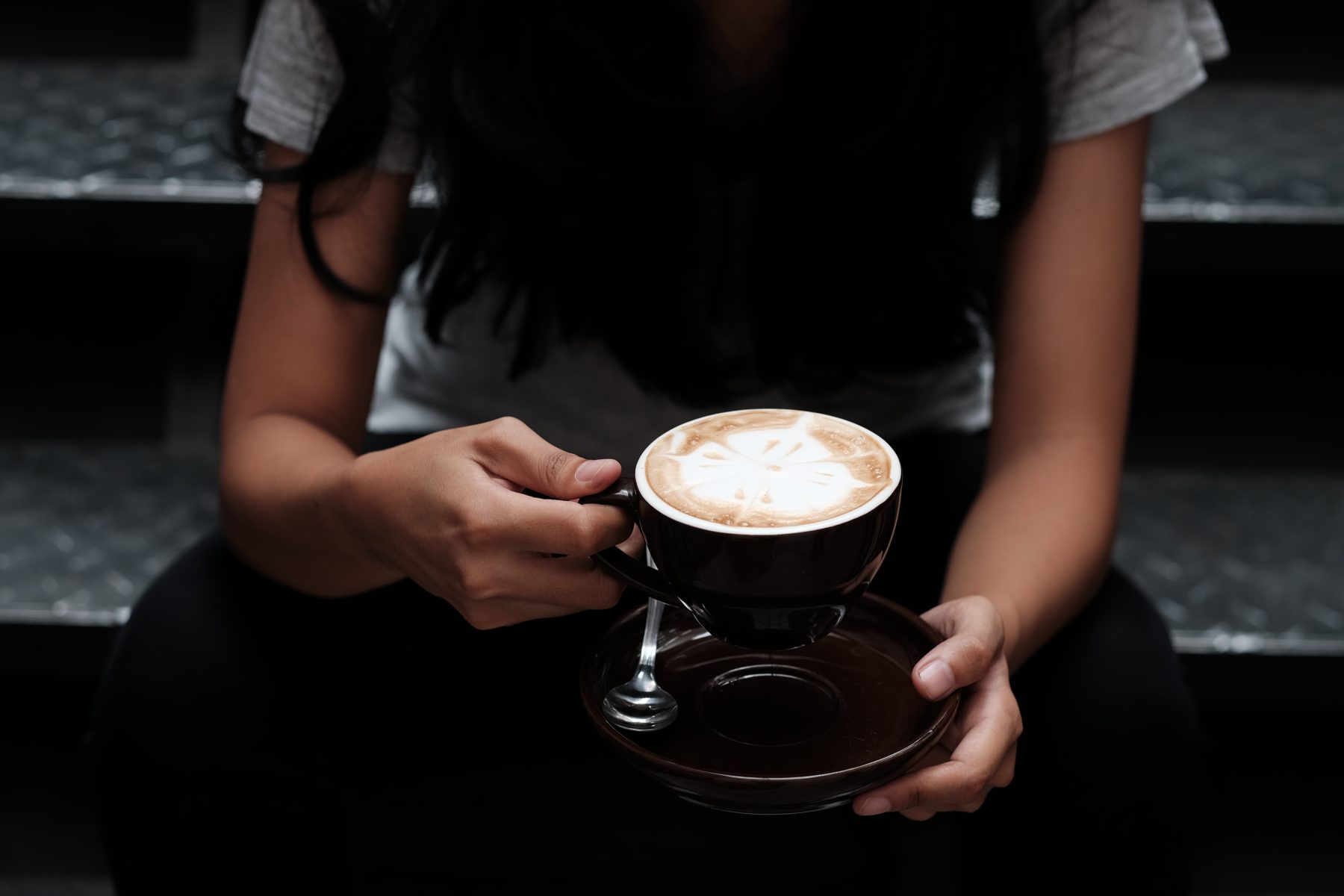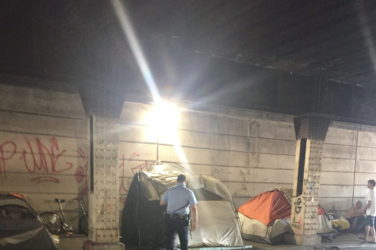Genelle Chaconas can’t go a day without caffeine. They consume the powerful stimulant in the form of coffee—a psychoactive drink derived from cooking the beans of an exotic shrub native to Latin America and Africa. They consume a cup each morning, and then repeat the ritual several times throughout the day.
Without it, says Chaconas, they become grumpy and unfocused. “Those who get between me and coffee don’t live long enough to tell about it,” admits Chaconas. Violent statements like these are commonly associated with caffeineheads—though more research may be needed to confirm a causal relationship with homicidal behavior.
It’s likely Chaconas, a California-based experimental writer and poet, became exposed to caffeine through the arts world. It is common for poets and writers to gather together and read works in progress aloud. These gatherings, called “open mics,” might sound benign, but typically take place within coffee shops—establishments devoted to peddling highly-caffeinated coffees and teas.
What’s more, these shops often lace coffee with sugar or flavors that make their wares appealing to young people. Some caffeine pushers—known as baristas—even add eye-catching designs to coffee foam, such as hearts and flowers, to entice users to share images of the product on social media.
Chaconas has their first novel slated for publication later this year by the Journal for Experimental Fiction. They won’t say how much of the manuscript was influenced by caffeine, but given Chaconas’s enthusiastic self-reports of daily use, the book will likely be classified as “caffeinehead fiction.”
Something is broken in our society when millions feel the need to self-medicate in this way.
It’s not just bohemians who are impacted by this drug. Caffeine is being abused by people in every field and every walk of life. It is even thought to be a staple among medical professionals, who use it to stay alert during long shifts.
Skyrocketing rates of coffee addiction across America mean that this can rightly be termed an epidemic. Something is broken in our society when millions feel the need to self-medicate in this way.
Stephanie, who asked that her last name not be used, is a Canadian peer engagement coordinator for the AIDS committee of Windsor. She says that coffee is her “life elixir.” Without it, she suffers from headaches, drowsiness and mood swings.
The symptoms of dependence described by Stephanie and Chaconas are typical. Caffeine is mood-altering and habit-forming, and frequently leads to obsessive, daily use that requires higher and higher doses to achieve the same effects. Both Stephanie and Chaconas say they attempted to cut down, but have been unable to break what has become for both a chronic, relapsing addiction.
In the case of Chaconas—in a cautionary tale for all who think they can recover from caffeine addiction without total abstinence—their attempts to drink less coffee simply led them to espresso.
Espresso, a highly potent, concentrated form of coffee, has been showing up with increasing frequency around the nation. Users accustomed to less potent forms of coffee, who have not developed sufficient tolerance, might find themselves experiencing unpleasant side-effects.
Symptoms of caffeine overdose can include heart palpitations, anxiety, tremors and a general feeling of being “jittery.” One study on caffeine use during pregnancy discovered an elevated risk of miscarriage. Surging use of espresso, which comes in a finely ground brown powder in its unbrewed state, has some experts fearing accidental exposure.
Childhood caffeine exposure can lead to habitual abuse later in life.
Caffeine can also be ingested in a number of forms besides coffee—many of which are disturbingly marketed to young people, whose developing brains are easily hijacked by the drug. It is present in a variety of sodas, “energy drinks,” pills and even some candies. It has also been showing up in chocolate—a popular treat among children. Some kids will pass caffeine-laced cakes or candies to their entire class as a means of commemorating special occasions, like birthdays.
Teachers and parents might view occasional caffeine consumption during childhood as “normal,” but childhood caffeine exposure can lead to habitual abuse later in life.
Both Chaconas and Stephanie, for example, report taking their first hit of caffeine during childhood. Stephanie says that her own grandmother used to dose her with coffee during visits as a young teenager. She began self-brewing while in high school.
Because of its legal status—though some are calling for tighter regulation—caffeine use is often downplayed and normalized. But the reality is far more sinister. Many caffeineheads find themselves organizing their day around their drug use, even pre-setting elaborate machines in their homes so that coffee is available for consumption immediately upon waking.
Chaconas admits to storing coffee in enclosed, portable containers which they bring into their workplace and consume throughout the day. They also admit to regularly pushing coffee onto house guests—typical of the way that distinctions between user and dealer may blur.
Chaconas’s addiction has now consumed their life to the point that they largely only socialize with other caffeineheads.
“They’re the only people I know anymore,” Chaconas says, bleakly. “It’s crazy when I meet someone who doesn’t drink coffee. How do you keep all your energy?”
Photo by Hanny Naibaho on Unsplash





Show Comments